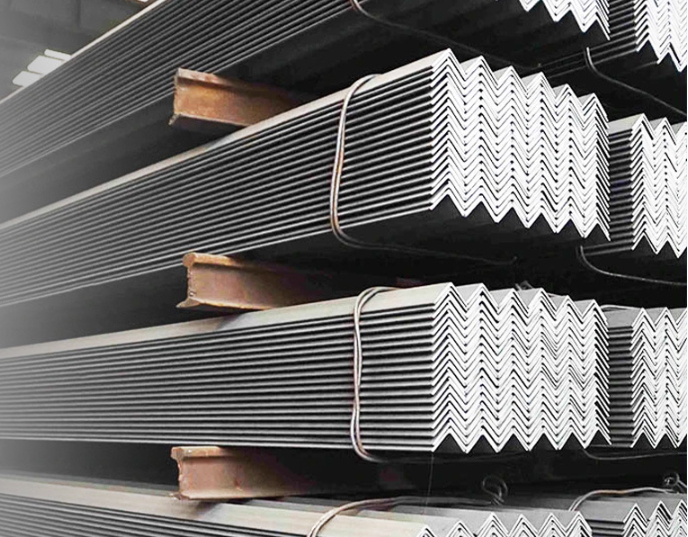Why Steel Prices Do Not Stay Stable and Keep Fluctuating
Upload Time:
Sep 29, 2023
Steel is an important pillar of infrastructure and the national economy, and its price stabiity has a profound impact on market participants. Despite that, steel prices can never stay stable and always keep fluctuating across the globe due to a large mixed factors. Such fluctuations inevitably lead to some unwanted influences for both steel suppliers and buyers most of the times. And they all wish the prices could be more predicable to the extent that allows them to make the right business decisions in advance, thus avoiding any economic losses. This blog will shed light on a few of the most significant reasons for unstable steel prices and how to predict market trends more accurately.
Raw Material Cost
The production cost of steel is mainly determined by the cost of raw materials such as iron ore, coke and scrap steel. Fluctuations in the prices of these raw materials directly affect the production cost of steel, which in turn affects the market price of steel. Since 2001, the prices of steel raw materials and fuels such as iron ore and coke have risen sharply. In particular, the long-term contract price of imported iron ore has risen sharply year after year since 2004, which has caused iron ore procurement costs for steel companies to rise significantly. For example, when the price of iron ore rises, the production costs of steel companies increase accordingly. in order to maintain profit levels, companies often increase the selling price of steel products. On the contrary, if the price of raw materials falls, theoretically the price of steel should also fall. However, due to factors such as market competition and corporate pricing strategies, actual price adjustments may not be completely synchronized.
Supply and Demand
RelationshipThe relationship between supply and demand is the core factor that determines steel prices. Steel prices tend to increase when market demand increases or supply decreases. For example, infrastructure construction, development of the real estate sector, and growth in automobile manufacturing all increase demand for steel, pushing up prices. Conversely, if the market is oversupplied or demand declines, steel prices may fall. Dynamic changes in the supply and demand relationship have caused steel prices to exhibit greater volatility.
Macroeconomic Environment
Changes in the macroeconomic environment have an important impact on steel prices. Changes in macroeconomic indicators such as economic growth rate, industrial production index, and fixed asset investment will have a direct impact on steel demand. Economic growth typically leads to the development of construction and manufacturing, which increases demand for steel. An economic slowdown or recession could lead to lower demand in construction and manufacturing, which could drive down steel prices. In addition, macroeconomic policies such as monetary policy and fiscal policy will also indirectly affect steel prices by affecting investment and consumption.
International Trade Policies
Changes in international trade policies also have a significant impact on steel prices. Adjustments to policies such as tarifs and trade barriers will directly affect the import and export volume and price of steel. For example, if a country imposes high tariffs on imported steel, it may cause the country's steel prices to rise and affect the supply and demand balance in the global steel market. In addition, tensions or improvements in international trade relations, as well as changes in the global economic situation, may have a profound impact on steel prices.
Technological Progress
Technological progress plays an important role in improving steel production efficiency and reducing production costs. The application of new steel-making technology and energy-saving and consumption-reducing technology can reduce energy consumption and raw material use, thereby reducing the production cost of steel. However, technological progress may also bring about changes in the market competition landscape, affecting companies' pricing strategies and market share. In addition, the speed and scope of technological progress will also affect the degree of volatility in steel prices.
Corporate Actions
The mentality and behavior of enterprises also have an important impact on steel prices. When market conditions are good, merchants tend to actively purchase and increase inventory to cope with possible future market demand. This behavior will activate intermediate demand and have a positive impact on steel prices. However, when the market conditions are not good, merchants may adopt a wait-and-see strategy or sell goods at a lower price to reduce inventory pressure and financial pressure. Such behavior may lead to market price chaos and increase the volatility of steel prices.
Seasonal Weather
Seasonal weather is also a factor that cannot be ignored that affects steel prices. Extreme weather conditions such as high temperatures, heavy snowfals, and rainy seasons will, on the one hand, cause difficulties in thel transportation and storage of steel and increase transportation and storage costs. On the other hand, they will also affect the demand for steel in related industries. For example, labor shortages and increased costs during high-temperature operations and crop harvest seasons may hinder the construction process, thereby affecting the demand and price of steel.
Summary
To sum up, the fluctuation of steel prices is the result of a combination of factors. Factors such as raw material cost, supply and demand relationship, macroeconomic environment, international trade policy, technolocicalprogress, corporate actions, seasonal weather and other factors interact to determine the supply and demand balance and price trend of the steel market. Therefore, it is crucial for investors, steel producers, and decisionmakers in related industries to understand and analyze these factors. Only by comprehensively considering these factors can we predict market trends more accurately and make reasonable investment and operatingdecisions. Having been devoted to the steel industry for more than two decades, Jiuzhou Metal not only has its own manufacturing plants across several provinces, it has also established long-term strategic relationshipswith multiple steel giants in China, to better cater to the needs of its clients worldwide. Therefore, in spite of frequent steel price fluctuations of our company, we can stil make very competitive offers for the maiority of theproducts in the field. And this is one of the prominent reasons why a significant amount of businesses from all over the world choose to consistently purchase from Jiuzhou Metal, in the hope of maximizing their owninterests.
Relevant News







